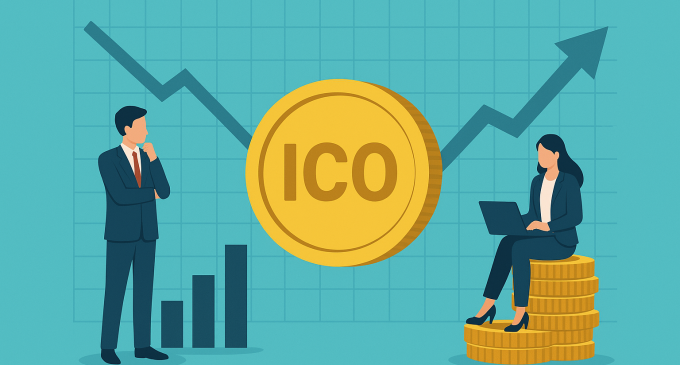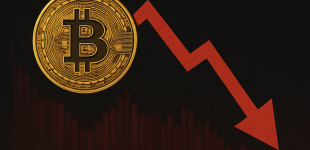
Introduction
The cryptocurrency industry has always been defined by its fast-moving trends, disruptive fundraising models, and rapid global adoption cycles. Initial Coin Offerings (ICOs) were once the dominant vehicle for blockchain startups to raise capital, but the market has witnessed a dramatic shift over the last few years. The ICO boom of 2017 and 2018 attracted billions of dollars in funding, but it also brought significant challenges, including regulatory crackdowns, scams, failed projects, and investor disillusionment. Today, the ICO market is shrinking both in volume and enthusiasm as new models such as Initial Exchange Offerings (IEOs), Initial DEX Offerings (IDOs), and hybrid token launches emerge to replace the unregulated ICO era.
The Rise And Fall Of ICOs
ICOs were first introduced as a novel way to democratize access to early-stage investments in blockchain projects. Startups could issue their own tokens directly to the public, often using Ethereum’s ERC-20 standard, and raise millions of dollars in weeks or even days. For investors, it provided an opportunity to support disruptive projects at an early stage and potentially achieve exponential returns.
The peak of the ICO boom in 2017 saw projects like EOS, Tezos, and Filecoin raising hundreds of millions. However, this period was also plagued by unrealistic promises, lack of transparency, and outright scams. Reports suggest that over 80 percent of ICOs launched during that period either failed or turned out to be fraudulent. Regulators worldwide, from the US Securities and Exchange Commission (SEC) to authorities in China and South Korea, took notice and began imposing stricter rules.
As regulatory oversight increased and investors became more cautious, ICO activity gradually declined. What was once a booming global trend turned into a shrinking sector within the broader digital asset market.
Shrinking Volume And Investor Enthusiasm
The ICO market is now a fraction of what it once was. Data from leading industry trackers highlights a consistent downward trend in both the number of ICO projects launched and the amount of capital raised. The investor enthusiasm that once fueled billion-dollar fundraising campaigns has cooled dramatically.
Several reasons explain this decline. First, the memory of widespread scams and failures has left many investors skeptical of ICOs. Second, the growth of alternative fundraising methods has offered safer and more structured options. Finally, the lack of regulatory clarity in many jurisdictions continues to discourage both issuers and investors.
The result is a market where ICOs, while still present, no longer dominate the narrative. Instead, they represent one small segment in a rapidly evolving landscape of token launches.
Shift Toward IEOs And IDOs
In response to the limitations of ICOs, new fundraising mechanisms have emerged that aim to provide more transparency and accountability. Initial Exchange Offerings (IEOs) and Initial DEX Offerings (IDOs) have gained popularity as they leverage existing platforms to manage token sales.
Initial Exchange Offerings (IEOs)
IEOs are conducted on centralized exchanges such as Binance, Huobi, or KuCoin. The exchange acts as a middleman, conducting due diligence on projects, managing investor onboarding, and ensuring compliance with relevant regulations. For investors, the exchange provides a layer of trust since it vets the projects before listing their tokens. For startups, IEOs offer access to a large user base and instant liquidity once the token is listed.
The rise of IEOs in 2019 marked a significant evolution from ICOs, as they solved some of the problems around credibility and fundraising structure. However, they are still dependent on centralized entities and face regulatory scrutiny.
Initial DEX Offerings (IDOs)
The decentralized finance (DeFi) boom gave birth to IDOs, which are token launches conducted on decentralized exchanges (DEXs) like Uniswap, PancakeSwap, or SushiSwap. IDOs allow projects to raise capital directly from the community in a decentralized manner, with instant trading enabled through liquidity pools.
IDOs have become especially popular due to their inclusivity, low entry barriers, and community-driven approach. They also align with the ethos of decentralization, which many in the blockchain community value. However, IDOs also face challenges, such as bots exploiting sales, lack of rigorous vetting, and high volatility after launch.
Hybrid And Regulated Token Models
Beyond IEOs and IDOs, hybrid fundraising models and regulated token issuance frameworks are becoming increasingly common. Many jurisdictions now allow Security Token Offerings (STOs), where tokens are classified as securities and must comply with financial regulations. These offerings are more structured, with clear investor rights, disclosures, and legal protections.
Hybrid models that combine elements of ICOs, IEOs, and STOs are also gaining traction. For example, a project may conduct a private regulated token sale to institutional investors while simultaneously launching a community token through an IDO. This dual approach ensures compliance while also engaging retail participants.
The movement toward regulated and hybrid models reflects the maturing nature of the market. Investors today are less attracted to speculative promises and more interested in projects that provide tangible utility, governance rights, or revenue sharing mechanisms.
Tokens Moving Beyond Speculation
One of the most important shifts in the token market is the growing focus on tokens with genuine utility or security functions. During the ICO boom, many tokens had little more than a whitepaper and a promise of future use. Today, projects are increasingly pressured to demonstrate real-world applications and deliverable products.
Utility tokens that power decentralized applications, grant governance rights, or facilitate ecosystem participation are becoming more common. Similarly, security tokens that represent equity, debt, or revenue rights are providing investors with legally enforceable claims. This move away from purely speculative models reflects the maturity of both issuers and investors.
Investors are no longer satisfied with hype and empty promises; they are demanding sustainable business models, transparent roadmaps, and compliance with legal frameworks. This trend has significantly altered the dynamics of token fundraising.
Global Regulatory Landscape
The regulatory environment has been a key driver of changes in the ICO market. Governments around the world are taking varied approaches, with some cracking down heavily and others encouraging innovation.
The United States continues to treat most ICO tokens as securities, requiring registration with the SEC or fitting into exemptions. This has made ICOs less attractive for US-based projects.
China has maintained strict bans on ICOs and certain token activities, though it is exploring regulated tokenization of assets in controlled settings.
The European Union has taken steps toward creating a harmonized framework under the Markets in Crypto-Assets (MiCA) regulation, which will provide clarity for token issuers and investors.
Other regions like Singapore, Switzerland, and the UAE are positioning themselves as crypto-friendly hubs, offering regulatory sandboxes and licensing regimes for token offerings.
This fragmented regulatory environment contributes to the decline of ICOs, as projects must navigate complex legal requirements. However, it also encourages the growth of alternative models that can adapt to specific jurisdictions.
The Future Of Token Fundraising
While ICOs are shrinking, the broader market for tokenized fundraising is far from dead. Instead, it is evolving into a more sophisticated and regulated ecosystem. Several key trends are likely to shape the future:
Increased Regulation and Compliance
Future token offerings will operate within clearer regulatory frameworks, reducing uncertainty for investors and encouraging mainstream adoption.
Institutional Participation
As token offerings mature, institutional investors are becoming more interested, particularly in regulated security tokens. This will bring more capital but also more stringent requirements.
Integration with Real-World Assets (RWA)
Tokenization of assets such as real estate, equities, and commodities is expected to grow. These offerings differ from traditional ICOs by being tied to tangible value.
Community-Driven Models
Despite regulation, community-oriented models like IDOs will continue to thrive, especially in DeFi and Web3 ecosystems where decentralization is a core value.
Focus on Utility and Sustainability
Tokens that provide genuine utility, revenue streams, or governance rights will attract more long-term interest than speculative projects.
Conclusion
The era of ICO dominance is over, but the concept of tokenized fundraising remains alive and well. The decline in ICO volume, projects, and investor enthusiasm reflects a market correction rather than the death of blockchain fundraising. In their place, IEOs, IDOs, STOs, and hybrid models are rising, offering more structure, transparency, and alignment with both investor expectations and regulatory standards.
For startups, this means that the days of launching a whitepaper and raising millions overnight are gone. Success in today’s environment requires compliance, utility, and accountability. For investors, the maturing landscape provides safer and more reliable opportunities to participate in the growth of blockchain technology.







There are no comments at the moment, do you want to add one?
Write a comment